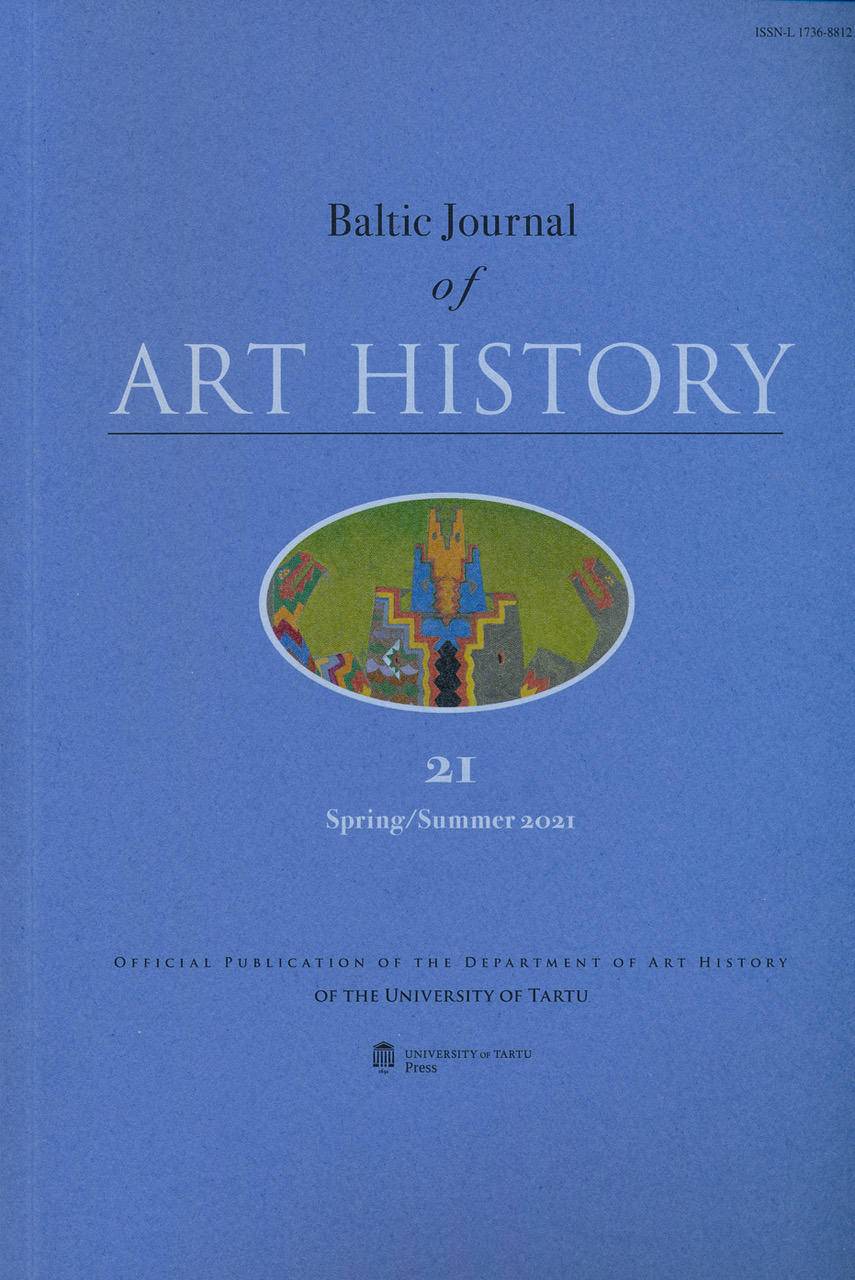The Magus of the North: Johann Georg Hamann’s Treatment of the Artistic Genius
DOI:
https://doi.org/10.12697/BJAH.2021.21.01Keywords:
Johann Georg Hamann, 18th century aesthetics, artistic genius, Sturm und Drang, counter-enlightenmentAbstract
In the 18th century, questions abound on the new branch of science
that is the discipline of aesthetics. In connection with this, first in
France and England, then also in the German sphere of thought,
artistic genius as the producer of an aesthetically valued artwork
becomes an object of interest. The term ‘genius’ enters German
vernacular in the middle of the 18th century, when the scholar
and philosopher Johann Georg Hamann commences his life work.
Interpretations of the works of Hamann, an influential irrationalist
or anti-rationalist of the Enlightenment era, are topical even today.
At the time, the Enlightenment-inspired, nascent German genius
theory is greatly influenced by the French tradition. However,
Hamann becomes a radical changer of the concept of genius. During
his sojourn in London (1757–1758), Hamann undergoes a religious
conversion, which subsequently becomes a catalyst for his entire
works and philosophy. Influenced by the British empiricist genius
tradition, from his first writings (Socratic Memorabilia and Aesthetics
in a Nutshell), Hamann enters into dispute with the spirit of the
Enlightenment that dominates German aesthetics, represented by
Gottsched, Mendelssohn, Lessing, etc., remaining in opposition
throughout his creative career. In his innovative literary works, rich
in metaphors, he proposes his own holistic idea of genius, which
centres around an artistic genius with a God-given talent, whose
creativity is directly connected to his faith in God and the perfect
nature he created. Hamann’s poetic artist, who creates his works
through divine sensation, is not limited by a single rule or law, nor
is he bound by the taste preferences of his audience. Hamann does
not see artistic creation as a pleasurable artefact which enhances
nature by rational rules, which has to adhere to the limits of good
taste – that view was prevalent and dominant at the time, especially
in the French and German Enlightenment ideology. He highlights
the idea of art as a metaphysical creative process which stems from
feelings and sensations through faith, which has a deep spiritual meaning. Hamann’s works, in which he addresses the questions of
art and genius, are not dry postulations, but the author’s original
visions of ingenious creation, which stand out by their intriguing
innovative structure, and often by ironic and humorous undertones.
Hamann’s concept of the artistic genius is one of the cornerstones
of German early romanticism, it has influenced numerous authors
in the 19th century and extended into the 20th century through
existentialist literature. Hamann’s vision of genius does not have
equivalents in the list of genius treatments, it is unique in both content
and form. Hamann’s ideas of genius will remain topical in every era
when subjective views of art are in focus, which stem from the inner
creative freedom of the artist, a creative who crosses boundaries and
ignores conventions, whose aspiration is guided by something that
cannot be subjected to ordinary explanations. The time has arrived
on the spiral of history today when the phenomenon of the artist is
yet again at the centre of discussions, and there is no reason to doubt
that artistic genius will continue revealing itself in times to come.

